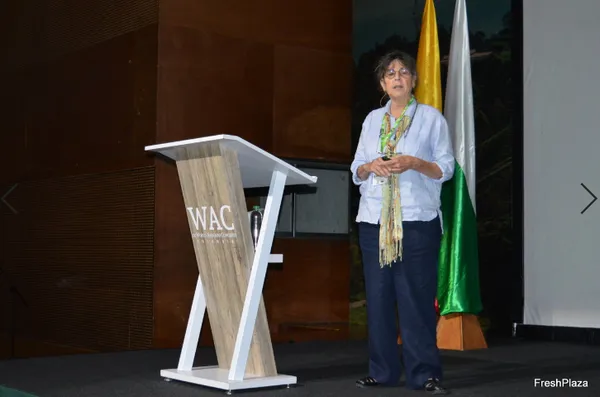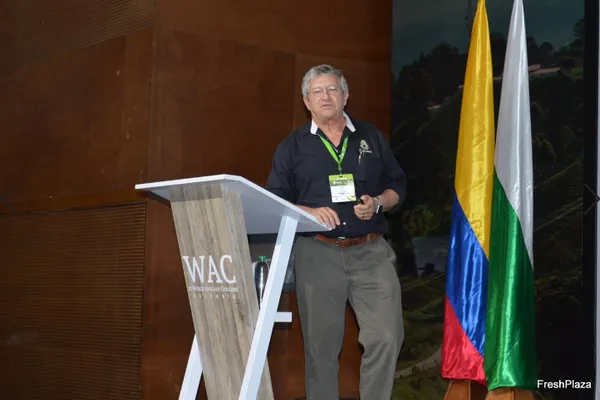Is there life after the current commercial avocado varieties? That is the question University of California researcher Mary Lu Arpaia posed to global industry representatives at the recent World Avocado Congress in Colombia.
"Should we be content with what we have, or should we keep moving forward?" she asked. "All of these varieties; Hass, Gem, Maluma and whatever else is out there, all have some kind of shortcomings. So, we need to be looking for something better. Our leading cultivar worldwide is Hass, but it can be improved. The fruit is hanging on the outside of the tree, so it can be sunburnt, more prone to scarring, it has a tendency for alternate bearing, and it doesn't like high heat, salinity and is susceptible to pests."

She added that the variety could have more productivity, quoting from Nigel Wolstenholme, who once wrote that avocados should have a yield of 30 tonnes per hectare - and Hass does not produce that. Another issue Ms Arpaia is warning growers about is not to be too focused on the one variety.
"Just think about the banana industry, and we are hearing what is happening to the Dwarf Cavandish, with the introduction of Fusarium," she said. "It is very dangerous to be a one variety industry. For that reason alone, we need diversity in what we grow. A big challenge is Hass has set a very high standard. For the programme in California, we have been looking for a precocious plant, and we can get seedling trees that bear fruit in three years. We are looking for low alternate bearing varieties, so you have uniform production. We are looking for upright slender trees that go into high density trellising systems - to me that's the future for avocados."
Hass accounts for 95 per cent of the varieties grown in California, with the other main varieties including Gem, Lamb Hass and Reed. But Ms Arpaia says it was not all so heavily focused on the one variety, with the Fuerte avocado playing a major role in avocado production, in the early 20th century.
"I want to pay homage to the Fuerte avocado, because it is the basis of how California became a commercial avocado industry," she said. "It was introduced in 1911 and by 1920 it was the leading variety until the 1970s. While Fuerte was known for its high food quality, it was also known for commercial problems. Enter the Hass avocado."
Ms Arpaia is part of a breeding programme, researching other potential varieties, not only in terms of growing techniques but also consumer preferences.
"Part of the thing that we have done in our programme is we have held monthly consumer panels," she said. "We've evaluated visual quality, but most importantly, eating quality. We have a range of both dark and green skinned varieties, that are comparable to Hass. We have material that can give the Californian industry 12-month market coverage. We have varieties that are precocious and yield efficiency. We want consumers buying avocados to drive the market even greater. I am happy to announce we are in discussions with a global partner, so some of the material can be released internationally in the next two years."

Major South African avocado producer, Dr André Ernst from Allesbeste told the congress that the avocado industry needs to make the jump towards cloned rootstocks.
"To develop an orchard today, it will cost you a fortune," Mr Ernst said. "It is vital that you need to be productive. The returns for avocados at the moment are quite good, but the market will go down. The people that will survive in the commodity-based industry will be those being productive. So, cloned rootstocks will be the determining factor."
Mr Ernst went onto explain the trials that his company have been undertaking, since 2015, using some promising international rootstocks.
"The objective of this study is to compare the production potential of 28 cloned rootstocks grafted to Maluma," he said. "Also, how it gives expression of the attributes or genetic abilities of the assigned cultivar. To find the most precocious and productive cloned rootstocks suitable for ultra-high density Maluma trellis planting."
After three years of data, at the 1250 density per hectare, Mr Ernst says the study found that production of seven tonnes per hectare within 16 months of planting is possible, and statistically some varieties outperformed conventional varieties.
"On precocity and productivity, some of the rootstocks showed potential to replace the industry standard commercial rootstocks for Maluma, under the conditions we trialled them" he said. "We will very soon start with a semi-commercial trial on trellis of these rootstocks. As part of an ongoing search for a superior high-quality productive cloned rootstock, a new trial at an even larger scale will be planted in 2019-20 with 65 national and international promising rootstock selections grafted to Maluma."
